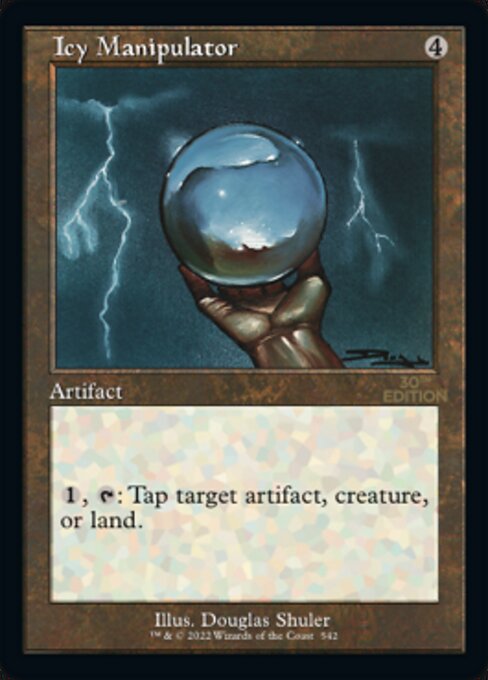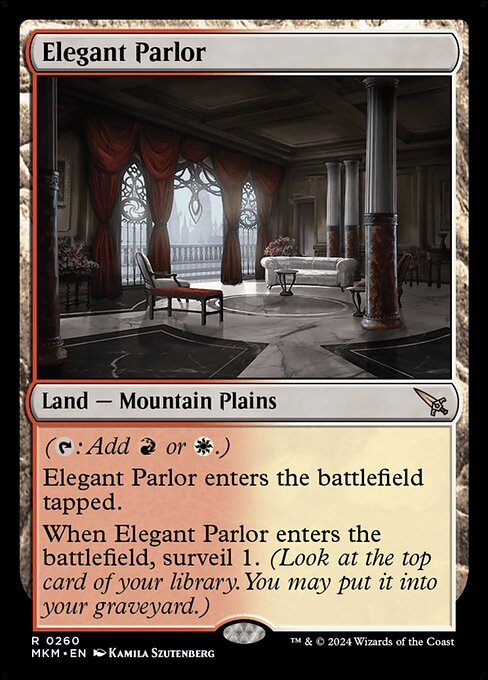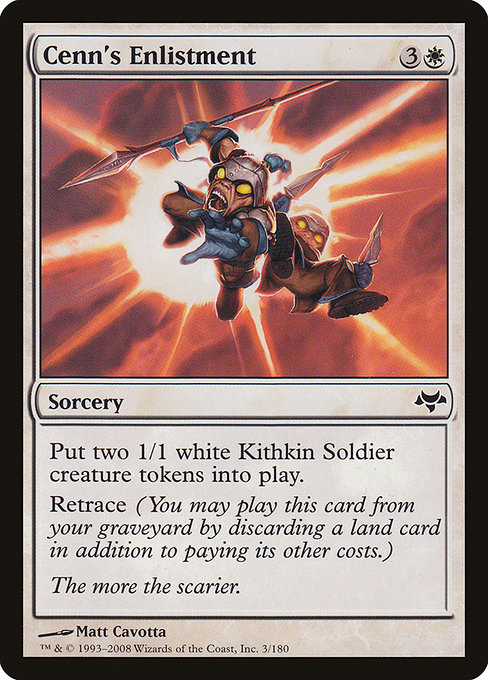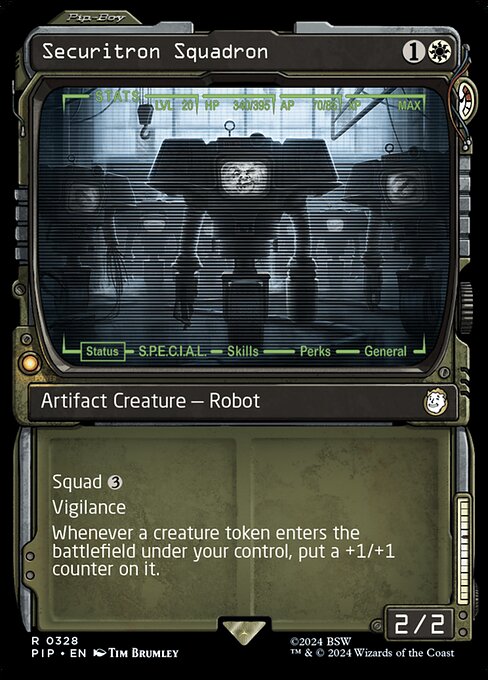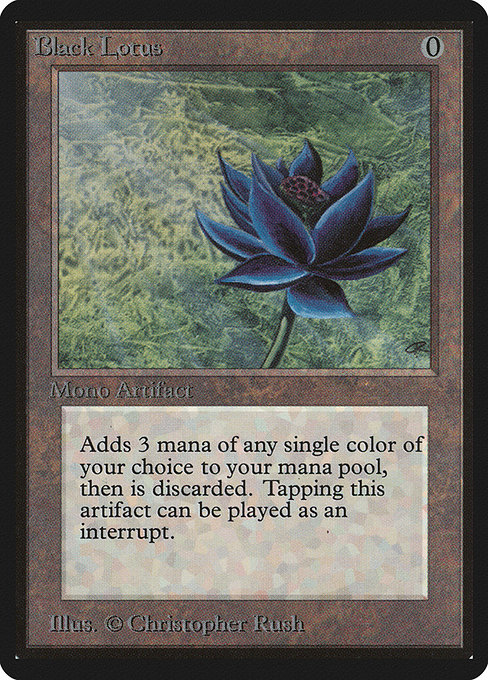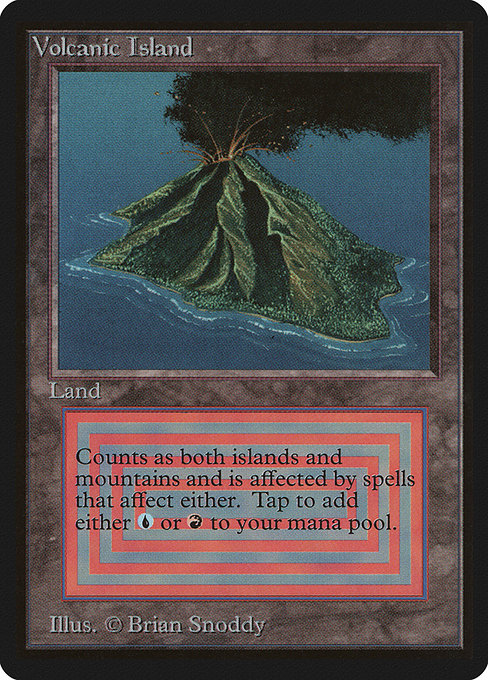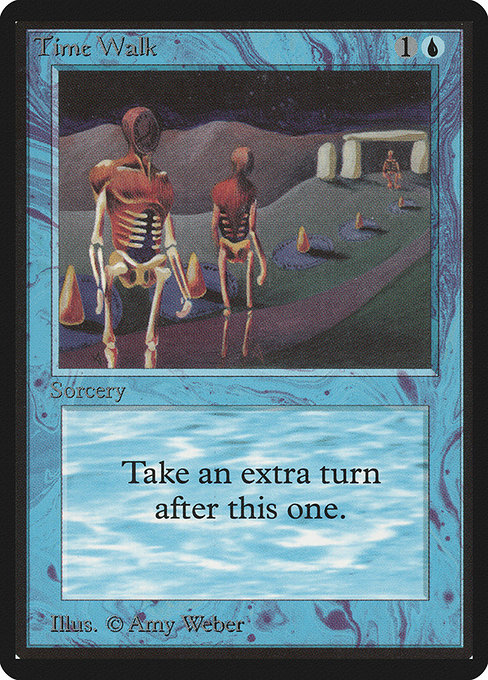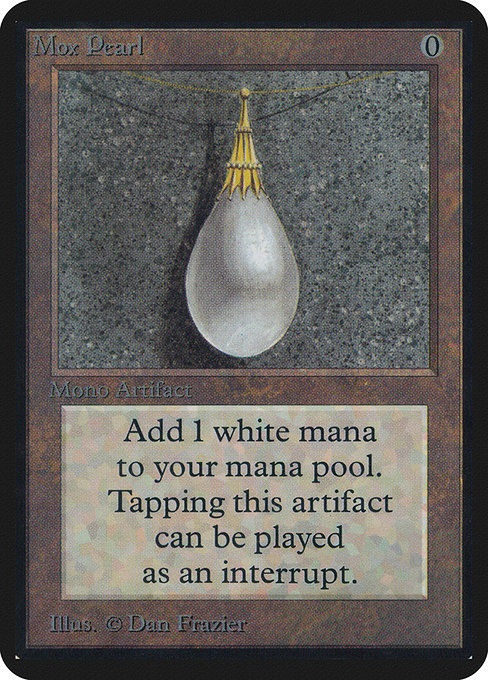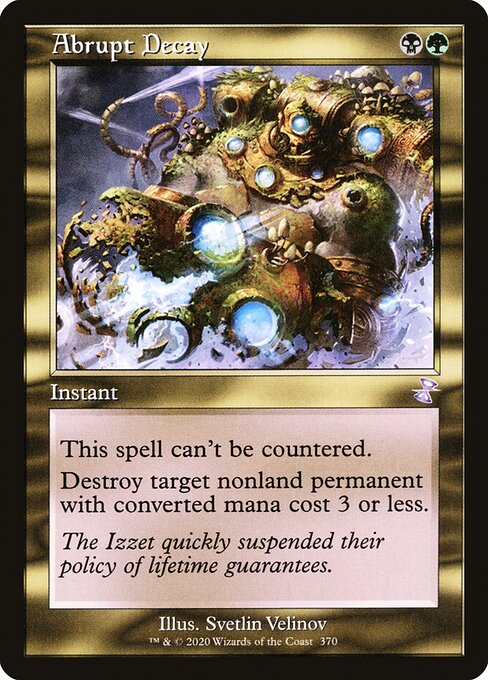
Abrupt Decay

Recent Analyses
Full Analysis
Generated on 2025-07-01T13:59:54.562153Abrupt Decay: A Comprehensive Review
Overview and TL;DR Summary
Abrupt Decay is a powerful instant spell that destroys a target nonland permanent with a mana value of 3 or less, and cannot be countered. This removal spell can clear the way for aggressive strategies or disrupt opponent's plans, making it an attractive addition to many Magic: The Gathering decks.
Detailed Card Mechanics and Interactions
As an instant spell, Abrupt Decay can be played at any time, including during combat, and will resolve immediately after it is played. This allows players to use the spell as a defensive tool to counter opponent's threats or as an offensive tool to clear space on the board.
The "can't be countered" keyword on Abrupt Decay means that once it is cast, opponents cannot use their available spells or abilities to stop its resolution. However, this does not mean that the spell can never be countered – if an opponent has a spell that allows them to return Abrupt Decay to its owner's hand, it may still be possible to neutralize its effect.
Strategic Uses, Combos, and Synergies
Abrupt Decay is a versatile removal spell that can be used in a variety of contexts. One common use is to clear the way for an aggressive strategy, such as a token or creature-heavy deck. By destroying opposing creatures or artifacts with low power and toughness values, Abrupt Decay can help create space for your own creatures to attack.
Another strategic use for Abrupt Decay is to disrupt opponent's plans by removing key pieces of their board state. This can be particularly effective in mid-game when opponents are building up their boards with more powerful permanents. By targeting these threats early on, you can prevent them from becoming problematic and create an opportunity to gain an advantage.
Some decks feature a mix of low-toughness creatures and Abrupt Decay, allowing the player to quickly clear the way for more powerful threats. In these cases, Abrupt Decay serves as a key enabler, allowing players to execute their plans efficiently.
Examples of Combo Pieces
- Token Generators: Some decks pair Abrupt Decay with token generators like Bulldoze or Sower of Years. This allows the player to quickly generate tokens and then use Abrupt Decay to clear the way for more powerful threats.
- Low-Toughness Creatures: Decks featuring creatures like Goblin Guide or Keldon Marauder can benefit from pairing Abrupt Decay with these low-toughness creatures. This allows the player to quickly swarm the board and then use Abrupt Decay to clear the way for more powerful threats.
- Counterspells: Decks featuring counterspells like Spell Pierce or Pyroblast can benefit from pairing Abrupt Decay with these spells. This allows the player to remove opponent's threats while also countering their spells.
Deckbuilding Roles and Archetypes
Abrupt Decay is typically used in aggressive or controlling decks that prioritize rapid board development or removal of opposing threats. In terms of deck archetype, Abrupt Decay fits well into the following categories:
- Aggro Decks: Abrupt Decay can help clear the way for an onslaught of low-toughness creatures.
- Midrange Decks: Abrupt Decay provides a key component in disrupting opponent's plans and clearing space for more powerful permanents.
- Token Decks: Abrupt Decay is often paired with token generators to quickly swarm the board and overwhelm opponents.
When building a deck around Abrupt Decay, players will want to consider cards that complement its removal effect. This may include creatures or artifacts with low power and toughness values, as well as other spells that can help generate card advantage or disrupt opponent's plans.
Format Viability and Competitive Context
Abrupt Decay has been a staple in Magic: The Gathering since its release in 2003. As such, it is widely considered to be a playable and competitive spell in most formats.
However, its viability can vary depending on the specific format and metagame.
In constructed formats like Standard and Modern, Abrupt Decay remains a powerful tool for removing low-toughness creatures and disrupting opponent's plans.
Its ability to counter opponent's spells also makes it an attractive option in formats where counterspells are prevalent.
However, Abrupt Decay is less effective in formats with more focused strategies or higher power ceilings, such as Commander or Brawl. In these formats, opponents may have more powerful removal spells or other ways to neutralize Abrupt Decay's effect.
Rules Interactions and Technical Notes
Abrupt Decay operates under standard Magic: The Gathering rules for instant spells.
As an instant, it can be played at any time, including during combat, and will resolve immediately after it is played.
However, Abrupt Decay has a specific interaction with the "can't be countered" keyword on other cards. This means that once it is cast, opponents cannot use their available spells or abilities to stop its resolution.
Art, Flavor, and Historical Context
The art for Abrupt Decay depicts a dark, foreboding forest with twisted roots and vines snaking up towards the sky.
The flavor text reads "A swift and merciless end," emphasizing the spell's ruthless efficiency in removing opposing threats.
Abrupt Decay was first released in 2003 as part of the original set, Planeswalker. At the time, it was seen as a relatively minor spell with limited applications.
However, its versatility and effectiveness have made it a staple of many Magic: The Gathering decks over the years.
Conclusion Summary
In conclusion, Abrupt Decay is a powerful and versatile instant spell that can be used in a variety of contexts to clear space on the board or disrupt opponent's plans.
